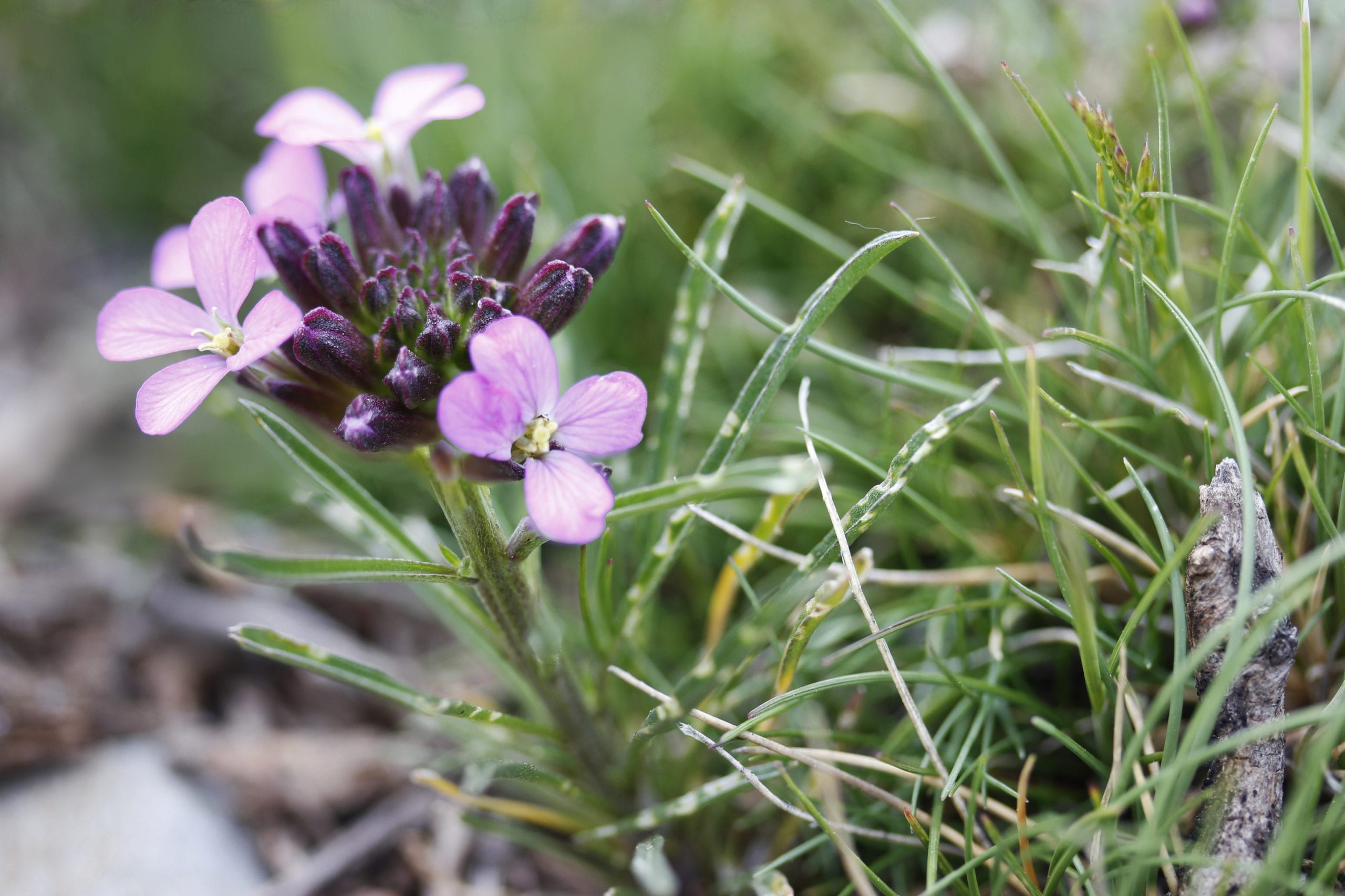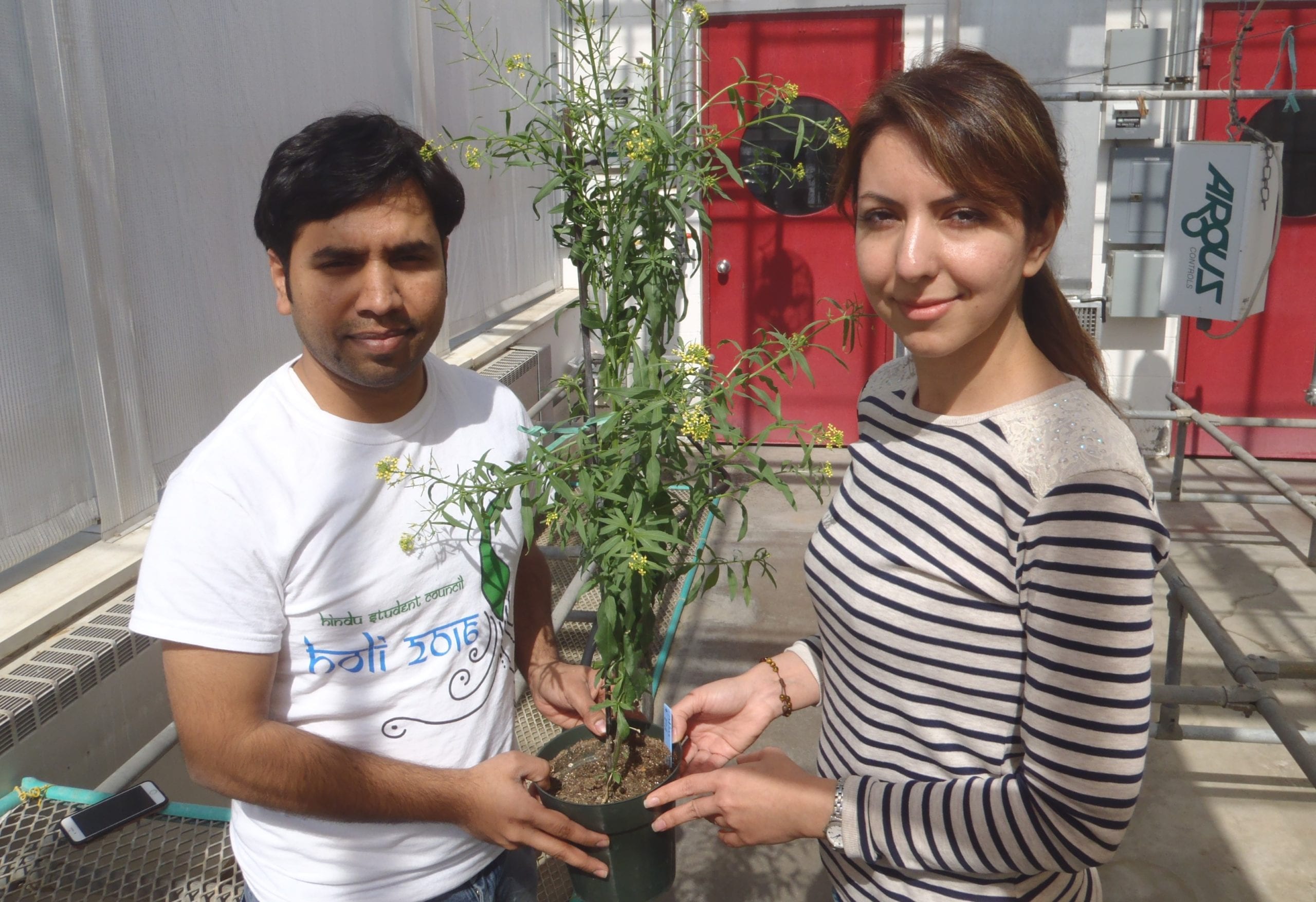News
Wallflowers Could Lead to New Drugs

Erysimum baeticum, a wallflower from the Sierra Nevada mountains in Spain, with visible damage to its leaves caused by local insects. Image credit: Tobias Züst.
Plant-derived chemicals called cardenolides have long been used to treat heart disease, and have shown potential as cancer therapies. But the compounds are very toxic, making it difficult for doctors to prescribe a dose that works without harming the patient.
For decades, researchers have longed to figure out how plants biosynthesize cardenolides, knowledge that could help them discover and develop safer versions of the drugs. Unfortunately, the cardenolides’ best-known plant sources – foxglove and milkweed – are not amenable to experimental techniques for identifying the genes and enzymes that are involved in producing the chemicals.
In a new study published online in eLife on April 7, a multi-institution team led by Boyce Thompson Institute faculty member Georg Jander and Tobias Züst, a research associate at the University of Bern’s Institute of Plant Sciences, showed that Erysimum cheiranthoides (wormseed wallflower) could be used as a model species to elucidate that information. Indeed, the team identified 95 candidate cardenolides, and has begun using the plant to investigate cardenolide biosynthesis.
“Twelve different plant families produce cardenolides, but nobody knows exactly how they make them,” Jander said. “I was looking for the best plant to study this pathway and settled on wormseed wallflower.” Jander is also an adjunct professor at Cornell University’s School of Integrative Plant Science.
The species is a great model for genetic studies because it has a short life cycle and is readily inbred, he said. “We need a plant that reproduces and gives us seeds quickly, which E. cheiranthoides does in about 10 weeks.”
The team’s study builds on work done in the 1990s by Alan Renwick, who is currently an Emeritus Professor at BTI (see “Wallflowers and the Butterflies that Don’t Love Them”).
 In this study, the team assembled the complete genome of the wormseed wallflower and sequenced more than 9,000 expressed genes from E. cheiranthoides and 47 other Erysimum species. The results provide a foundation for identifying the genes that encode enzymes involved in the biosynthesis of cardenolides. For example, the team discovered potential pathways by which Erysimum species modify a basic precursor cardenolide, digitoxigenin, into eight more structurally complex molecules.
In this study, the team assembled the complete genome of the wormseed wallflower and sequenced more than 9,000 expressed genes from E. cheiranthoides and 47 other Erysimum species. The results provide a foundation for identifying the genes that encode enzymes involved in the biosynthesis of cardenolides. For example, the team discovered potential pathways by which Erysimum species modify a basic precursor cardenolide, digitoxigenin, into eight more structurally complex molecules.
To further enable the use of E. cheiranthoides as a model, the genome was assembled with long read data and Hi-C scaffolding, a method that can provide a more contiguous genome than previous approaches, said Susan Strickler. Strickler is the director of the BTI Computational Biology Center (BCBC) and senior research associate at BTI.
“A high quality reference genome makes it easier for us to find genes of interest and their locations, in this case genes for the biosynthesis of cardenolides,” she said.
The team is now conducting mutagenesis studies in E. cheiranthoides to allow them to find the entire cardenolide biosynthetic pathway. “Ultimately the genes underlying the biosynthetic pathways could be inserted into bacteria or yeast, which would be used to manufacture heart and cancer medicines that are safer than what are currently available,” said Jander.
Evolutionary insights
The study also revealed a wide diversity of cardenolides, both across the Erysimum genus as a whole and within individual species. “What was most surprising to me is the huge chemical diversity in the genus: nearly one hundred different cardenolides and 25 or so glucosinolates,” said first author Züst.

Former BTI postdocs Pavan Kumar and Mahdieh Mirzaei hold the Erysimum cheiranthoides (wormseed wallflower) plant that was used for genome sequencing. Image credit: Georg Jander.
Many plant species produce either cardenolides or glucosinolates as toxic defenses against herbivorous insects. In turn, many insects have evolved resistance to one or the other chemical class, depending on which occurs in the insects’ food source. Erysimum is unusual in that it produces both types of chemicals.
The team’s findings suggest the genus originally produced glucosinolates as an ancestral defense, then acquired the ability to produce cardenolides as recently as 2 to 4 million years ago as part of an “arms race” between plants and insects. This second line of defense gives Erysimum an advantage against its insect enemies because none have yet developed resistance to cardenolides.
“It has allowed Erysimum to escape herbivory,” said Züst. “And it is a nice example of ongoing evolution.”
Züst said it was also surprising to find no apparent cost to Erysimum, in terms of growth, reproduction or general fitness, in maintaining both defensive systems. “In all but one of the species we studied, both systems are expressed and we don’t see any apparent tradeoffs.”
However, he theorized that the cost of maintaining dual defenses might be reflected in the rarity of Erysimum species: they are not widely distributed and grow in small patches only in niche environments – such as cracks and roadsides – not colonized by other plant species.
The study was supported by funding from the Swiss National Science Foundation (grant PZ00P3-161472), the U.S. National Science Foundation (awards 1811965 and 1645256) and a grant from the Ithaca, NY-based Triad Foundation, which funds early work in new areas of research.
“This is a nice example of putting Triad funding to use in getting good preliminary data, which will help us apply for additional grants,” Jander said.


